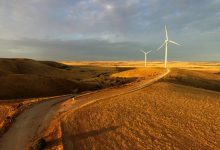The re-shaping of Australia’s main grid continues apace, with black coal generation setting a new record low in the National Electricity Market, and the combined output of wind and solar matching the combined output of brown coal, black coal and gas on Saturday.
With the addition of hydro, they did – and provided 51% of net demand as pumped hydro and batteries chose a cheap time to charge.
The new record was set at 1pm on Saturday afternoon, when rooftop solar was its peak. The share of wind and solar might have been higher, and the amount of coal generation lower, had not around nine large scale solar farms in Queensland switched off due to constraints or because of negative prices.
As illustrated by this graph below from Dylan McConnell, from the Climate and Energy Institute, the output of black coal generators was little more than one third of their registered capacity.
Some coal generators, like Liddell, are operating at reduced capacity due to their age and imminent closure. Others are starting to make a habit of dialling down their output when rooftop solar provides much of the daytime needs.
As this next chart shows, rooftop solar is no longer taking small bites out of black coal generation, it is now taking large chunks. And around the time that this occurred, wind and solar were producing 49.2 per cent of total output, equal to the combined output of brown and black coal, and various gas generation sources.
As time moves on, and as more wind and solar is connected to the grid, as well as more storage, this share will dramatically increase.
As Paul McArdle, over at Watt Clarity, noted that Queensland, which has the most rooftop solar PV (and the most large scale solar too), reached its lowest level of black coal generation in 16 years – just over 3,800MW on Saturday, then went even lower on Sunday.










